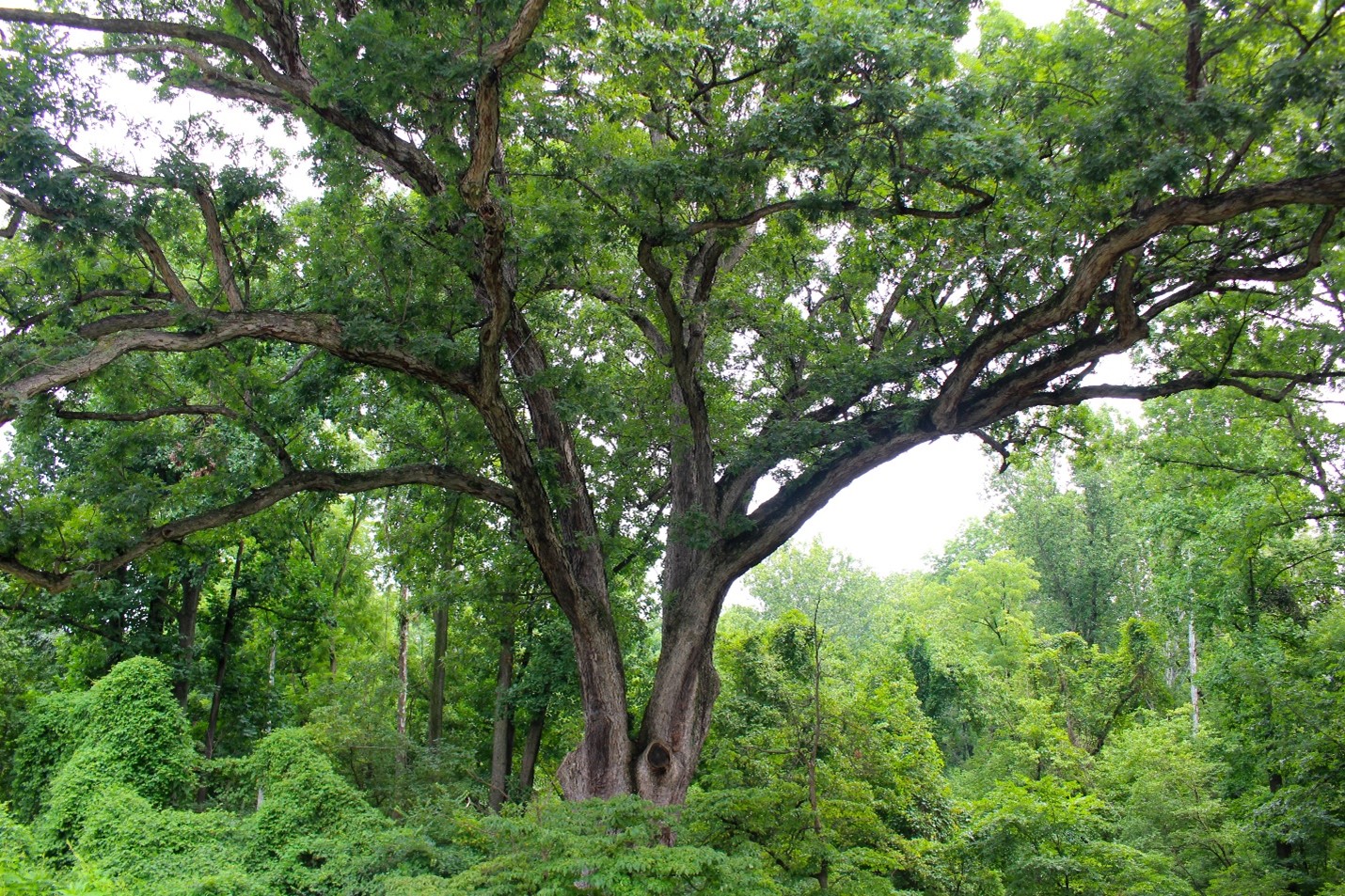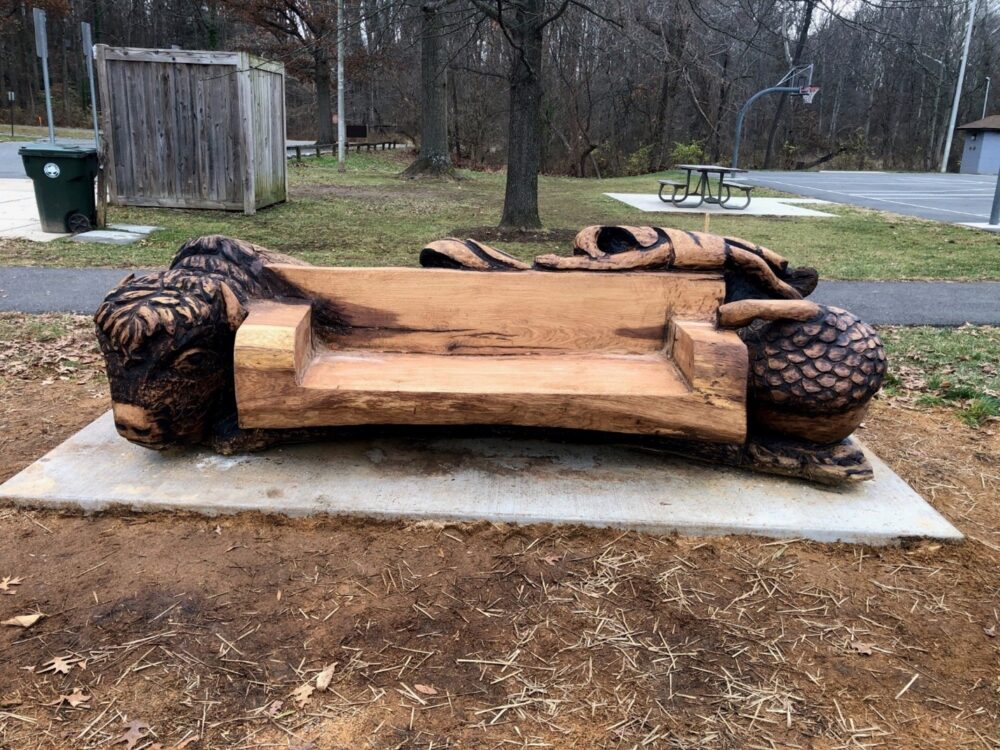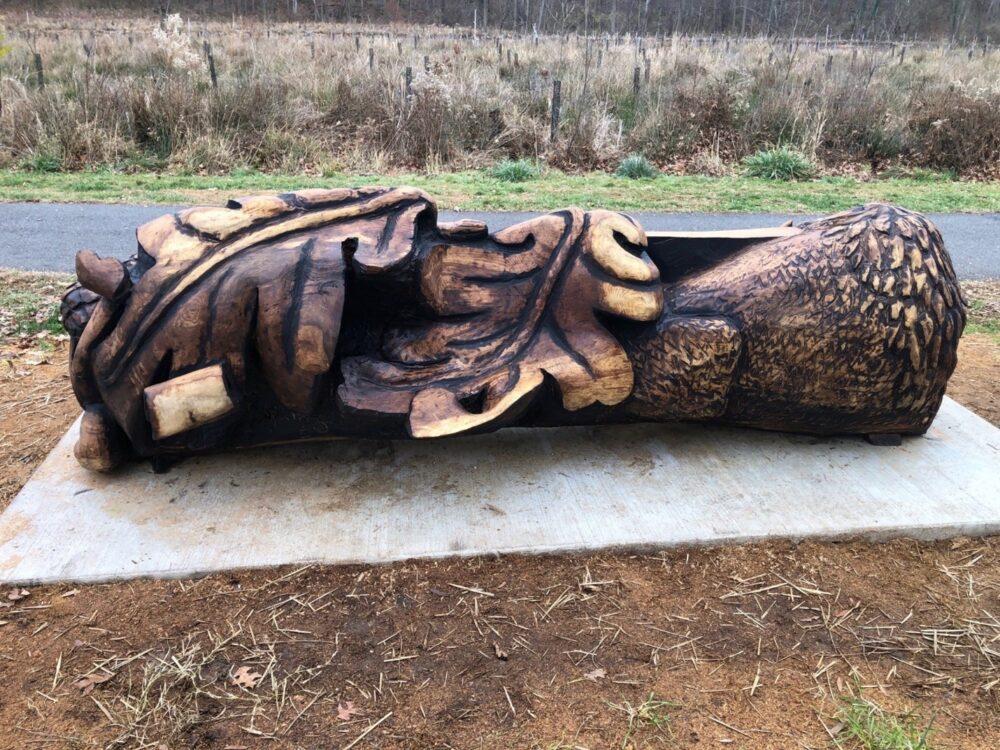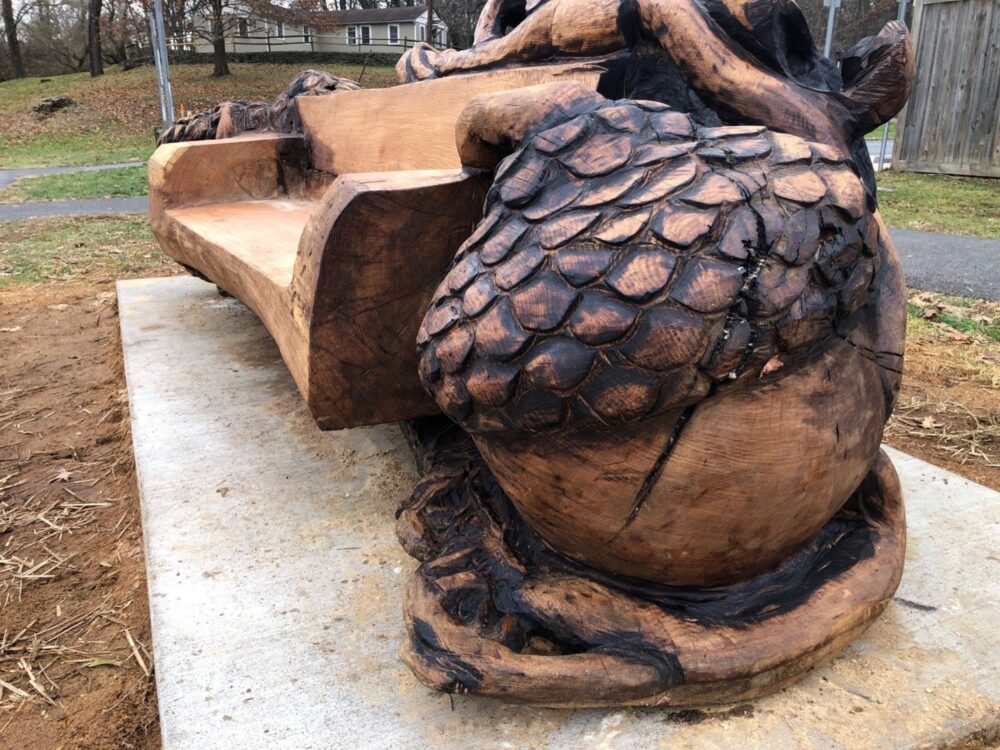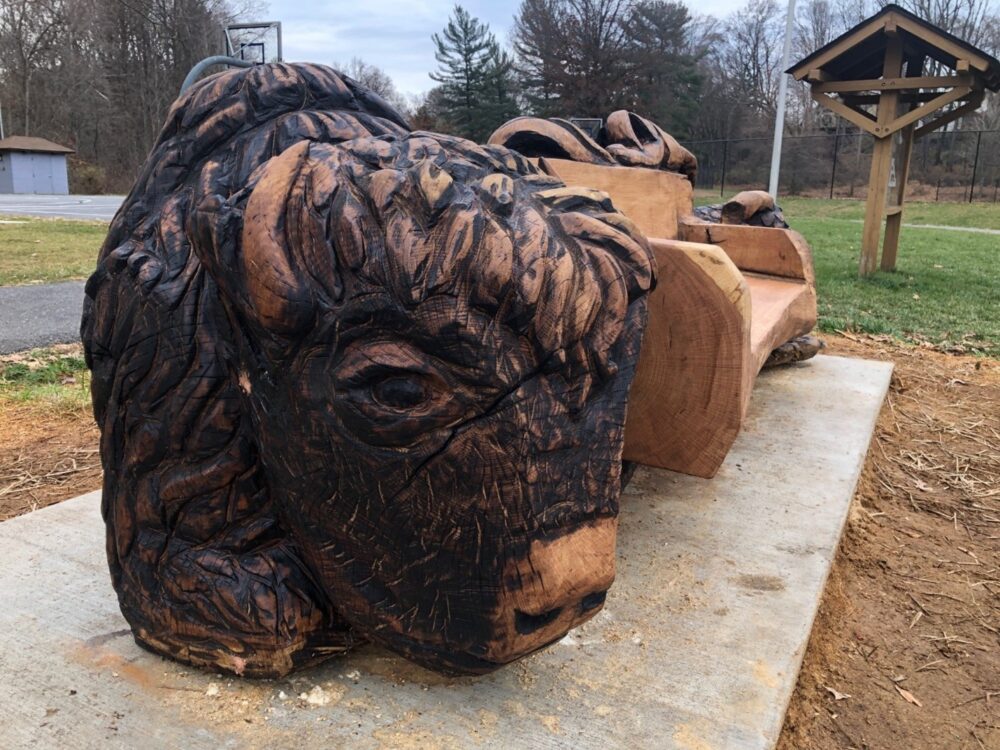Healthy Tree Canopy
The Urban Forestry Section is part of the Montgomery Parks Horticulture, Forestry and Environmental Education Division supporting the acquisition, conservation, development, maintenance, and management of parks.
Our section oversees the inspection, maintenance, preservation, and care of trees in more than 420 parks and over 36,000 acres of Parkland. We provide training and guidance to staff, other agencies, and the public as it relates to tree selection, care, assessment, preservation, maintenance, plant health, and green waste utilization. Our specially trained staff strives to maintain a healthy tree canopy on Parkland by utilizing the latest techniques and innovations in the industry.
Tree Inventory
Montgomery Parks’ tree inventory is being collected by our Arboriculture Section to gather information that will help us better manage trees in our developed parks throughout the County.
The goals of the tree inventory are to:
- Provide long-term maintenance of trees on a regular cycle
- Understand tree species distribution to plan for tree planting
- Track and combat tree pests and diseases
- Increase the public’s awareness of the benefits of trees
Urban Forest Patches
An urban forest patch is a small forest community that is located within an urban context, surrounded by diverse land uses such as buildings, roads, and other human infrastructure. Urban forest patches can contribute to ecological functioning and sustainability in cities. These patches serve as essential habitats for both people and wildlife. Montgomery Parks has identified several urban forest patches on parkland throughout the county and is currently evaluating each one to identify management strategies to preserve and enhance the health and resilience of each patch. The two main goals for this program are:
Promote diverse forest structure
By encouraging a mix of tree species, ages, and sizes, we can create a more resilient and dynamic forest. Diverse forests support a wide range of plant and wildlife communities, contributing to overall ecosystem health. We will improve this through tree planting efforts and Non-Native Invasive control.
Engage surrounding communities
Involving residents in the care and stewardship of urban forest patches fosters a sense of ownership and connection. Community engagement can lead to better management practices, increased awareness, and improved outcomes for both people and nature.
By addressing these management goals, we can create vibrant urban forest patches that enhance biodiversity, improve human well-being, and contribute to the overall resilience of our communities.
Current Projects
Waverly-Schuylkill Neighborhood Park: We will be planting 40 native trees and 15 native shrubs in the northern forested section of the park.
Dutch Elm Disease
Dutch Elm Disease is primarily caused by the fungus, Ophiostoma novo-ulmi, introduced to the United States in the 1930s. After the introduction, the disease moved across North America causing a massive removal of one of the most popular street trees, the American elm, Ulmus americana. Unfortunately, the disease is still present in the environment and any surviving American elms are susceptible to the disease.
Dutch Elm Disease is primarily spread by the feeding of bark beetles who carry the spores when they feed on the twigs and small branches of elm trees. The spores germinate and spread the fungus through the vascular system of the infected tree. The response from the tree, then closes off vascular tissue and cutting off flow of water and nutrients to the infected branches. The first symptoms show as yellowing leaves at branch tips that than start to brown. If cuttings are taken, brown or black vascular streaking can be seen under the bark. This disease can cause a rapid decline in the tree leading to mortality within one year of infection.
Unfortunately, once infected, there is no treatment for this disease. Sanitation pruning and bark tracing, which can require removal of large sections of the crown or disfiguring the tree, are shown to be somewhat affective at managing the disease. Prevention with prophylactic treatment with a fungicide is the most effective way to prevent the disease.
Treatment Methodology:
Macroinjection is a treatment technique that has been widely used in the tree care industry since the 1970s to provide preventative treatments for Dutch elm disease. It is a process that requires the hand excavation around the root collar of the tree to expose the underside of the roots. This is where holes are drilled and plugs are inserted, connected to tubing leading to a 35 gallon container which holds the fungicide mixed with a large amount of water. The fungicide then is taken up through the xylem of the tree out to all the small twigs to prevent the disease. This treatment will need to be repeated once every three years to continue to protect the tree. Once the treatment has started, a MDA Certified Applicator will be onsite until the treatment is completed. Due to the proximity to the playground, Montgomery Parks Urban Foresters will install a temporary orange fence before injection begins to prevent anyone from unknowingly wondering into the job site. This fencing will remain in place for a week after treatment.
The Linden Oak
The Linden Oak was a white oak tree (Quercus alba) located in North Bethesda, Montgomery County, MD. The tree was the largest white oak in the county measuring over 95 feet tall, 77 inches in diameter with a crown spread of 124 feet. It was thought to be the oldest white oak in the county and state when it died, estimated to be around 300 years old and was designated a bicentennial tree in 1976. The tree stood on property owned by the Maryland-National Capital Park and Planning Commission (M-NCPPC), Montgomery Parks, who cared for the tree for decades. The tree was in slow decline for the last several years of its life and finally died in 2021.
“Connected Through Time”
After the tree’s death, the local community approached Montgomery Parks about ways to reuse the wood of the tree to commemorate the tree’s life. It was decided that a sculpture from the wood of the tree would be created so the Linden Oak could live on in the memory of the community. On July 18, 2023, the tree was taken down by Montgomery Parks except for 30 feet of the trunk which still stands in its original location. One piece of wood was selected for the carving. The remaining wood was transformed into wood slabs as part of Montgomery Parks’ urban wood reuse program. These slabs were made available for purchase to the public at Montgomery Parks’ annual Urban Wood Sale in December 2023 for artisans and woodworkers to create projects of their own.
A grant from the Montgomery Parks Foundation was used to hire a local chainsaw artist, Colin Vale of Carving Colin, to create this bench from a log of the Linden Oak which is permanently displayed in Montgomery Parks at Ken-Gar Palisades Local Park in Kensington, MD. On one side of the bench is an acorn sprouting with unfurling leaves and roots that represent the humble beginnings of the Linden Oak. The other side of the bench is a female American woods bison which were present when the Linden Oak first sprouted but are not currently part of the local landscape. The title of the sculpture, “Connected Through Time”, invites us to reflect not only on the history of the Linden Oak but how we are connected to our histories and futures in the present moment.
